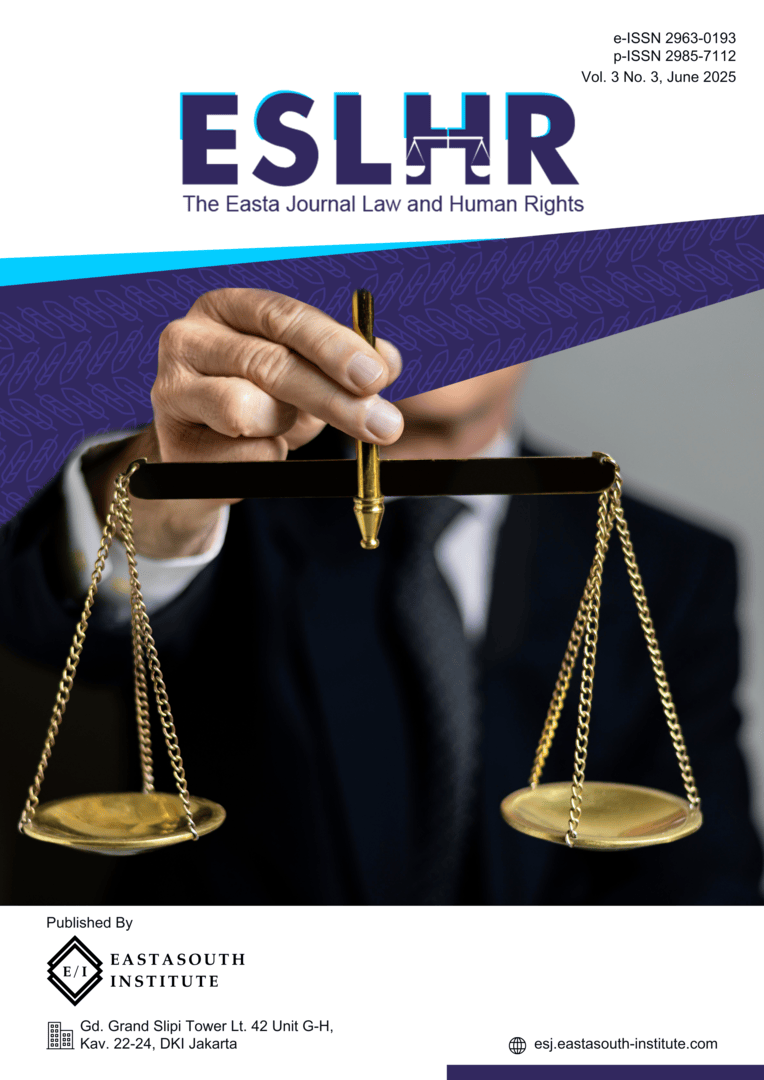War of Opinions: Humanitarianism and Racism (Case Study of The Palestine-Israel Conflict)
Main Article Content
Abstract
This study explores the dynamics of the war of opinions within the ongoing Israel-Palestine conflict, which is extensively covered through both mainstream and social media. This longstanding conflict not only involves political and religious aspects but also pits humanitarian and racial issues against each other in the global public sphere. Employing a qualitative method and literature study approach, this research examines the narratives constructed by both parties—Israel and Palestine—and how media framing influences public perception. The findings reveal that media framing and the spread of propaganda on social media have triggered sharp polarization in international society, thereby widening the gap and hindering peaceful resolution. Such opinion polarization creates a black-and-white perception of the conflict, turning humanitarian issues into tools of justification and racism into a form of dehumanization. This study underscores the need for a holistic understanding and clear-headed analysis of the conflict to foster solidarity based on human values rather than identity-based fanaticism.
Article Details

This work is licensed under a Creative Commons Attribution-ShareAlike 4.0 International License.
References
E. G. Matthews, D. Newman, and M. S. Daoudi, The Israel-Palestine Conflict. Routledge, 2011.
M. Yarchi and L. B. Shabtai, “The Image War Moves to Tiktok Evidence from the May 2021 Round of the Israeli-Palestinian Conflict,” Digit. Journal., vol. 13, no. 1, pp. 115–135, 2023.
G. Gondwe and C. Walcott, “Victims or Villains? How Editorial Cartoons Depict the 2023 Israel-Palestine War,” Online Media Glob. Commun, vol. 3, no. 1, pp. 1–26, 2024.
J. Mueller, Public opinion on war and terror: manipulated or manipulating? Cato Institute, 2021.
A. Zhafira, “Berdirinya negara di atas negara: sejarah perampasan tanah Palestina oleh Israel yang membawa pada pelanggaran hak asasi manusia,” J. Ilmu Sos. Polit. Dan Huk., vol. 1, no. 1, pp. 15–22, 2023.
J. A. Dewantara, W. Sulistyarini, Afandi, and Efiani., “Pelanggaran HAM dalam konflik Israel dan Palestina berdampak terhadap hilangnya hak asasi manusia khususnya hak anak di Palestina,” J. Kewarganegaraan, vol. 7, no. 1, pp. 19–25, 2023.
S. Muslim, A. F. Lubis, and Sahrul., “Analisis peran keputusan Dewan Keamanan PBB dalam menentukan status hukum teritorial di Tepi Barat,” J. Huk. Dan HAM Wara Sains, vol. 2, no. 1, pp. 1057–1064, 2023.
D. Newman and H. Yacobi, The Role of the EU in the Israel/Palestine Conflict. 2004.
N. Miladi and A. Miladi, “Digital Media and the War of Narratives in Reporting the Palestinian-Israeli Conflict,” in In Global Media Coverage of the Palestinian-Israeli Conflict, 2023, pp. 11–30.
M. E. McCombs and D. L. Shaw, “The agenda-setting function of mass media,” Agenda Setting J., vol. 1, no. 2, pp. 105–117, 2017.
E. Y. Ritonga, “Teori agenda setting dalam ilmu komunikasi,” J. Simbolika, vol. 4, no. 1, pp. 32–41, 2018.
F. I. Butsi, “Mengenal analisis framing: tinjuan sejarah dan metodologi,” J. Ilm. Ilmu Komun. Commun., vol. 1, no. 2, pp. 52–58, 2019.
M. Zahoor and N. Sadiq, “Digital Public Sphere and Palestine-Israel Conflict: A Conceptual of News Coverage,” Lib. Arts Soc. Sci. Int. J., vol. 5, no. 1, pp. 168–181, 2021.
M. Bosch and T. Divon, “The sound of disinformation: TikTok, computational propaganda, and the invasion of Ukraine,” Sage Journals, vol. 26, no. 9, pp. 5081–5106, 2024.
H. Cangara, Komunikasi politik: konsep, teori, dan strategi, 5th ed. Rajawali Pers, 2016.
R. Palupi and C. Sitasi, “Penyalahgunaan media sosial sebagai alat propaganda,” J. Komun., vol. 10, no. 1, pp. 69–76, 2019, [Online]. Available: http://ejournal.bsi.ac.id/ejurnal/index.php/jkom
M. S. Ramadani, K. Kurniawan, and A. Fuadin, “Menguak bias media dalam pemberitaan konflik Israel-Palestina: sebuah analisis konten kritis,” J. Onoma Pendidik. Bhs. Dan Sastra, vol. 10, no. 1, pp. 887–905, 2024.
B. D. Sholehkatin, L. A. P. Winarta, P. Wijayanti, and R. C. Rahayu, “Analisis peran media sosial dalam konflik Israel-Palestina ditinjau dari teori orientalisme Edward W Said,” Hum. Resour. Manag. Bus. J., vol. 1, no. 1, pp. 31–39, 2024.
K. Payne, “The Media as an Instrument of War,” Parameters, vol. 35, no. 1, pp. 1–14, 2005.
F. B. Annas, H. N. Petranto, and A. A. Pramayoga, “Opini publik dalam polarisasi politik di media sosial,” J. PIKOM, vol. 20, no. 2, pp. 111–122, 2019.
P. Moy and B. Bosch, “Theories of public opinion,” in Handbook of Communication Science, Sociology Department, Faculty Publications, 2013, pp. 289–308.
C. Suleiman, Language and Identity in the Palestine Conflict. I.B.Tauris & Co Ltd, 2011.
S. Bhowmik and J. Fisher, “Framing the Israel-Palestine Conflict 2021: Investigation of CNN’s Coverage from a Peace Journalism Perspective,” Media, Cult. Soc., vol. 45, no. 5, pp. 1019–1035, 2023.
A. Z. Derajat and T. Kurniawan, “Normalisasi hubungan Israel dan Arab dalam konteks Israel-Palestina,” J. Ilm. Hub. Int., vol. 18, no. 2, pp. 133–149, 2022.
A. Syari’ah, N. Nabilah, and R. Wijayanti, “Kekejaman Israel terhadap rakyat Palestina: telaah berita-berita CNN Indonesia tahun 2019-2021,” Din. Sos. J. Pendidik. Ilmu Pengetah. Sos., vol. 1, no. 1, pp. 58–80, 2022.
D. A. Firdausi, “Perlawanan diaspora Yahudi Sulawesi Utara terhadap antisemitisme melalui museum holocaust Indonesia,” Nuraeni, vol. 5, no. 2, pp. 95–111, 2023.

